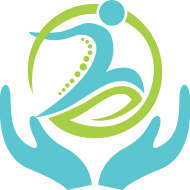- Spinal and Extremity Joint manipulations and Mobilisations
- Massage therapy
- Dry Needling
- Kinesiotaping
- Therapeutic Ultrasound
- Interferential Current Therapy
- Flexion-distraction
- Exercise and stretching regimes
What are Joint manipulations and Joint mobilisations?
Joint manipulations and mobilisations are specialised manual therapies. Both joint manipulations and joint mobilisations aim to improve the range of movement and overall function of a joint. Before receiving a joint manipulation or mobilisation, your chiropractor will perform a case history and physical assessment to ascertain which exact joint is exhibiting decreased range of motion. A joint manipulation or joint mobilisation is then applied to that specific joint.
A joint manipulation is known as a high velocity, low amplitude thrust which is applied to a specific joint. It is usually associated with an audible “click”. A mobilisation is a gentler approach which may be utilised in certain cases such as severe osteoporosis or when a manipulation is contraindicated.
Joint manipulations and mobilisations have mechanical, physiological and neurological effects which assist with decreasing pain and restoring range of motion.
What is Dry Needling?
Dry needling is a form of treatment for trigger points which are commonly known as painful “knots” which arise in muscle. These “knots” are usually painful to touch, cause local and referred pain as well as muscle stiffness. Dry needling is a method where a thin solid filament needle is inserted directly into the trigger point within a muscle. The physical insertion of the dry needle into a trigger point causes a mechanical breakdown of the trigger point which leads to a cascade of physiological effects within the muscle tissue. The array of physiological effects has been shown to decrease muscle spasm, reduce pain and improves range of motion.
What is Kinesiotaping?
Kinesiotaping is a taping technique for treating muscular and joint injuries using an elastic adhesive tape which is applied directly to the skin. The tape is applied in a very specific manner, depending on the injury or condition the patient is experiencing. The tape is water-resistant and can be worn for multiple days. Depending on the type or severity of the injury, the tape can be removed and reapplied until the injury has improved.
Kinesiotaping is a specific technique used to provide support and stability to a muscle or joint without restricting the range of movement of the muscle or joint.
What is Therapeutic Ultrasound?
Therapeutic ultrasound is a frequently used treatment modality which utilises sound waves to penetrate tissues beneath the skin. The ultrasound machine produces sound waves at frequencies which are inaudible to the human ear. These sound waves produce heat and initiates physiological effects within tissue which increases blood flow and promotes tissue healing.
Therapeutic ultrasound is a painless, non-invasive treatment method used for decreasing inflammation and promoting healing in soft tissue injuries such as ligament sprains, tendinopathies or muscle strains.
What is Interferential current Therapy?
Interferential current therapy (IFC) is a widely used form of electrotherapy. The IFC device transmits electrical impulses in minute quantities through your skin. The underlying tissue and nerves are stimulated which initiates a healing process.
IFC assists in reducing muscle pain, inflammation, edema and muscle spasms. It’s also very useful in improving blood circulation and stimulating muscles that have been immobilized for a prolonged period of time.
What is Flexion-distraction?
Flexion-distraction is a chiropractic technique used predominantly for treating disc herniations which occur in the lumbar spine. Flexion-distraction involves the use of a specially designed chiropractic bed. The bed assists the chiropractor in creating traction between vertebrae. This results in an increased disc space between two vertebrae and consequently decreasing pressure on the disc which lies between the two vertebrae. Flexion distraction therefore not only alleviates the pressure on the disc itself, but can also decrease the pressure on spinal nerves which may be compressed by the bulging disc. This results in decreased pain in the lower back, as well as nerve pain related to the disc herniation.
